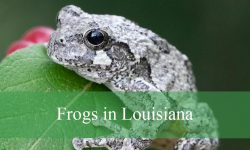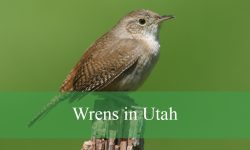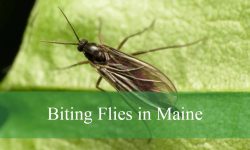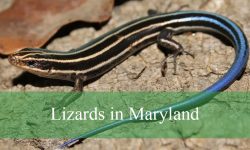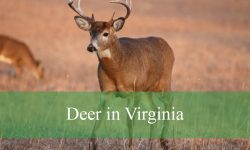Vultures are often misunderstood creatures, known for their scavenging habits but rarely appreciated for the vital role they play in our ecosystems. They help keep the environment clean by consuming carrion, preventing the spread of disease.
In Virginia, birdwatchers can spot two distinct species of vultures: the Turkey Vulture (Cathartes aura) and the Black Vulture (Coragyps atratus). Each species has unique characteristics and behaviors that make them interesting to observe.
This guide provides detailed information on identifying these vultures, understanding their habitats and behaviors, and discovering the best times and locations to watch them throughout Virginia.
Turkey Vulture (Cathartes aura)
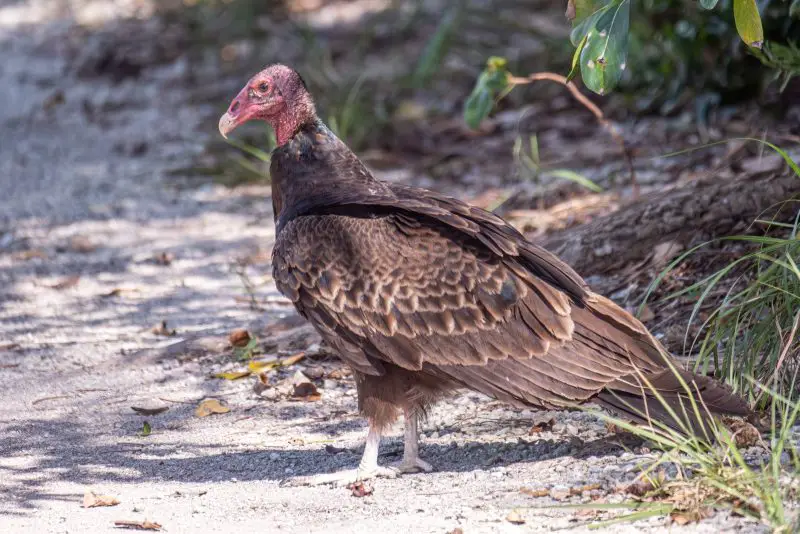
Identification
Turkey Vultures are large, impressive birds, measuring around 24 to 25 inches in length with a wingspan that ranges between 5 and 6 feet. Their plumage is predominantly dark brown to black, which contrasts sharply with their bare red head, a feature that becomes more vibrant with age. In flight, they are easily recognized by the shallow “V” shape of their wings, which they hold while soaring effortlessly on thermal currents. Observers can also note the long tail and the pale undersides of their flight feathers, which are particularly visible when the bird glides or circles in the sky.
Habitat
These vultures are remarkably adaptable and occupy a wide variety of habitats across Virginia. They are frequently seen in open areas such as rural roadsides, farm fields, and suburban regions where carrion is often available. Turkey Vultures are also drawn to sites with abundant food sources, including landfills, trash heaps, and areas near human activity. For nesting and roosting, they prefer wooded areas, often selecting isolated trees or forest edges that provide shelter while remaining close to open spaces for foraging.
Behavior and Activity
Turkey Vultures are known for their exceptional soaring ability, which allows them to cover large areas while searching for carrion. They rarely flap their wings, instead using thermal updrafts to glide gracefully in circles. These birds often gather in communal roosts during the evening, and their keen sense of smell helps them detect decaying animals from great distances, a trait that sets them apart from many other raptors.
Best Time to Observe
While Turkey Vultures reside in Virginia year-round, they are most active during the warmer months when thermal currents are strongest. Observing them during midday hours provides the best chance to see them soaring gracefully in the sky. Their activity peaks in late spring through early fall, as rising temperatures create more robust updrafts that assist their effortless flight.
Ideal Observation Locations
Shenandoah National Park offers expansive open areas and strong thermal updrafts, making it one of the prime locations to watch Turkey Vultures soar. The George Washington and Jefferson National Forests provide a mix of wooded areas and open clearings that support their roosting, nesting, and foraging needs. Coastal regions such as Virginia Beach offer clear skies and unobstructed views, allowing observers to spot these vultures gliding high above the landscape with ease.
Black Vulture (Coragyps atratus)
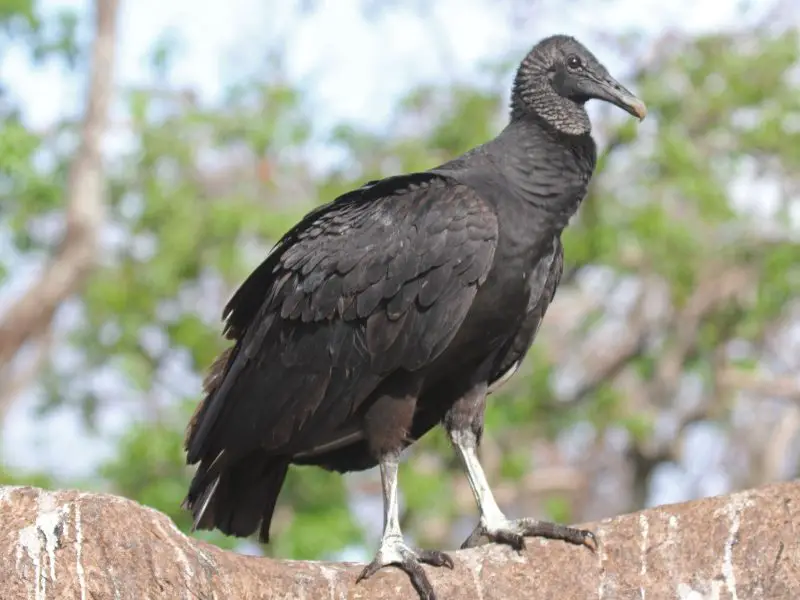
Identification
Black Vultures are slightly smaller than Turkey Vultures, measuring between 22 and 27 inches in length with a wingspan of approximately 4.5 to 5 feet. Their plumage is glossy black, complemented by a bare gray-black head, which is less colorful than the bright red head of the Turkey Vulture. In flight, Black Vultures exhibit shorter wings and a shorter tail compared to Turkey Vultures, and they are often seen flying in small groups or large flocks. One of the most distinctive features is the prominent white patches on the underside of the wings, which become visible when the birds soar or glide.
Habitat
Black Vultures favor open habitats where they can easily locate carrion. In Virginia, they are commonly found in lowlands near highlands, open fields, and areas with human activity such as garbage dumps. These birds are highly adaptable and can also thrive in both urban and rural centers, often taking advantage of roadsides and farmland for feeding. Despite their adaptability, they usually roost in trees or on structures that provide a clear vantage point for spotting potential food sources.
Behavior and Activity
Black Vultures are highly social and frequently travel in flocks, often accompanying Turkey Vultures but showing more aggressive behavior when competing for food. They are strong fliers but tend to flap more frequently than Turkey Vultures, relying less on thermals. Like their larger cousins, they are scavengers that feed primarily on carrion, using keen eyesight rather than smell to locate food. They are also known for communal roosting, which provides safety and enhances foraging efficiency.
Best Time to Observe
Black Vultures are present throughout the year in Virginia and are most active during daylight hours. They are frequently observed soaring high in search of food, especially in the morning and afternoon when thermal currents help them conserve energy during flight. Their activity patterns are similar to Turkey Vultures, though they may be more visible in open landscapes and urban areas where food sources are abundant.
Ideal Observation Locations
Fairfax County offers numerous urban and suburban areas where Black Vultures can be seen gliding over neighborhoods, parking lots, and open spaces. In Lancaster County, open fields and lowland areas provide ideal conditions for spotting these birds in flight or foraging. The James River Wildlife Management Area features diverse habitats, including riverine and woodland edges, supporting various wildlife species alongside Black Vultures and offering excellent opportunities for observation.
Comparative Overview of Vultures in Virginia
Feature |
Turkey Vulture (Cathartes aura) |
Black Vulture (Coragyps atratus) |
|---|---|---|
Size |
Larger (24–25 inches) |
Smaller (22–27 inches) |
Wingspan |
5–6 feet |
4.5–5 feet |
Head Color |
Red |
Gray-black |
Flight Pattern |
Soars in “V” shape |
Soars with shorter wings and tail |
Habitat Preference |
Open and wooded areas |
Open habitats, urban and rural |
Activity Period |
Year-round, more active in warm months |
Year-round, particularly active during the day |
Where and When to Spot Vultures in Virginia
Top Vulture-Watching Locations
Shenandoah National Park is one of the premier locations for observing vultures in Virginia. The park’s vast open spaces and strong thermal updrafts create ideal conditions for Turkey Vultures and Black Vultures to soar gracefully above the landscape. Observers often see these birds circling high in the sky, gliding effortlessly as they search for food.
The George Washington and Jefferson National Forests also offer excellent opportunities for vulture-watching. The forests feature a mix of wooded areas, open clearings, and river valleys, providing diverse habitats that support both Turkey and Black Vultures. These areas are particularly favorable for spotting vultures roosting in trees or soaring above open fields.
Coastal regions such as Virginia Beach provide unobstructed views, making it easy to watch vultures flying along the shoreline. The combination of coastal thermals and wide open skies allows birdwatchers to observe these birds in dynamic flight patterns as they glide and circle overhead.
In urban and suburban regions, Fairfax County offers numerous vantage points for spotting Black Vultures. These birds are highly adaptable and can often be seen soaring over neighborhoods, roads, and open parks. Similarly, Lancaster County’s lowlands and open fields attract both species, particularly where food sources are abundant. The James River Wildlife Management Area presents a mix of riverine habitats and woodlands that support a variety of wildlife, including both Turkey and Black Vultures, making it a prime location for observation.
Optimal Times for Observation
Vultures are most active during daylight hours, with activity patterns influenced by thermal currents and temperature. During the morning, roughly between 9 AM and 12 PM, vultures can often be seen perched on tree limbs or fence posts with their wings outstretched, basking in the sun to warm up for the day. As the afternoon progresses, from around 1 PM to 4 PM, their activity increases as they take to the air, soaring in search of food and covering large areas effortlessly. By late afternoon and early evening, between 4 PM and 6 PM, vultures begin to prepare for roosting, returning to trees or elevated structures to settle in for the night.
Frequently Asked Questions About Vultures in Virginia
What Do Vultures Eat?
Vultures are scavengers that primarily feed on carrion, playing a crucial role in maintaining ecosystem health. By consuming dead animals, they help prevent the spread of disease and recycle nutrients back into the environment. Their feeding behavior ensures that decomposing carcasses are quickly removed from natural and human-influenced landscapes.
Are Vultures Dangerous to Humans?
Despite their large size and intimidating appearance, vultures are not dangerous to humans. They are non-aggressive birds that focus on scavenging rather than hunting. While they may seem imposing when soaring overhead or gathered in groups, they pose no direct threat and generally avoid human contact.
How Can I Attract Vultures to My Area?
Attracting vultures requires creating suitable habitats such as open fields or wooded areas with potential access to carrion. However, it is essential to manage these areas responsibly, ensuring that the presence of vultures does not create public health or safety issues. Encouraging natural foraging in safe, legal ways can support vulture populations without causing conflicts.
Are Vultures Protected in Virginia?
Yes, vultures are protected under the Migratory Bird Treaty Act. It is illegal to harm, capture, or possess vultures without the appropriate permits. This protection helps ensure that both Turkey Vultures and Black Vultures continue to thrive in Virginia’s diverse habitats, maintaining their essential ecological roles.
What Is the Difference Between a Turkey Vulture and a Black Vulture?
Turkey Vultures and Black Vultures differ in size, appearance, and foraging strategies. Turkey Vultures are larger, with red heads and longer tails, and they rely on a keen sense of smell to locate carrion. Black Vultures are smaller, with gray-black heads and shorter tails, and they primarily use sight, often following Turkey Vultures to find food. Observing these distinctions in flight or at roosts makes it easier to identify each species in the wild.

